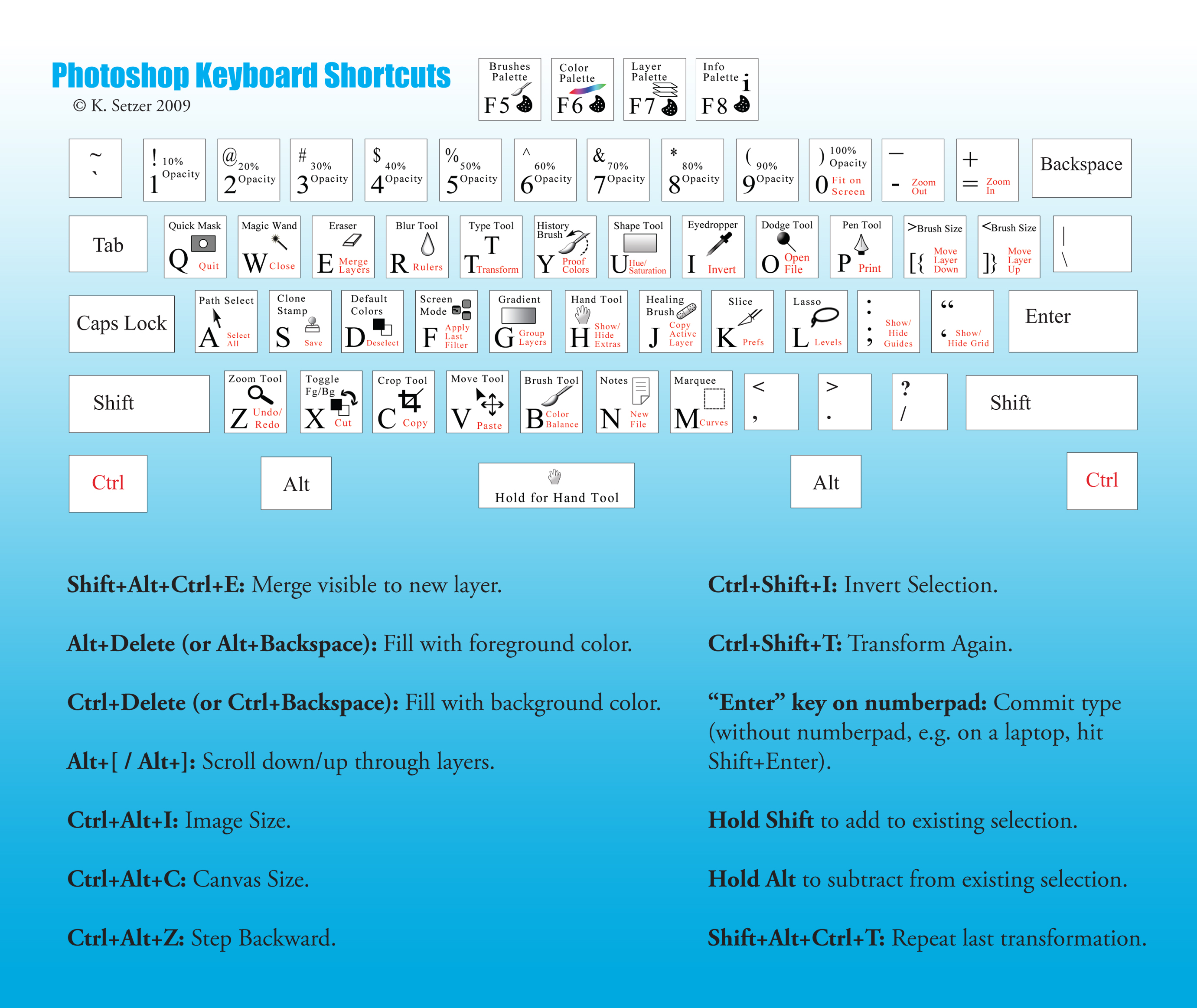Photoshop Shortcut Keys Pdf In Hindi
Nov 25, 2013 - 506 time-saving Hotkeys for Adobe Photoshop CS5. Extensive, exportable. Shift+Arrow Keys, Move selection 10 pixels. Ctrl+C, Copy. Photoshop CS4 Shortcuts: PC Here are many keyboard shortcuts for Photoshop CS4, including lesser known and hidden keystrokes! Download PDF Mac shortcuts All shortcut guides.
Composite of two menus with keyboard shortcuts specified in the right column In, a keyboard shortcut is a series of one or several, such as ' to search a character string. Such a directive invokes a or operation (in other words, cause an ) when triggered by the. The meaning of term 'keyboard shortcut' can vary depending on software manufacturer. For instance, Microsoft differentiates keyboard shortcuts from hotkeys ('mnemonics' on Windows) whereby the former consists of a specific key combination used to trigger an action, and the latter represents a designated letter in a menu command or button that when pressed together with the Alt key, activates such command—whereas a 'hotkey' on Windows is a system wide shortcut that is always available in all contexts as long as the program responsible for it is running and not. Contents • • • • • • Description [ ] Keyboard shortcuts are typically a means for invoking one or more commands using the that would otherwise be accessible only through a, a, different levels of a, or via a.
Keyboard shortcuts are generally used to expedite common operations by reducing input sequences to a few, hence the term 'shortcut'. To differentiate from general keyboard input, most keyboard shortcuts require the user to press and hold several keys simultaneously or a sequence of keys one after the other. Unmodified key presses are sometimes accepted when the keyboard is not used for general input - such as with graphics packages e.g. Other keyboard shortcuts use that are dedicated for use in shortcuts and may only require a single keypress. For simultaneous keyboard shortcuts, one usually first holds down the (s), then quickly presses and releases the regular (non-modifier) key, and finally releases the modifier key(s). This distinction is important, as trying to press all the keys simultaneously will frequently either miss some of the modifier keys, or cause unwanted auto-repeat.
Sequential shortcuts usually involve pressing and releasing a dedicated prefix key, such as the, followed by one or more keystrokes. Are distinguishable from keyboard shortcuts. One difference between them is that the keyboard shortcuts are not localized on multi-language software but the mnemonics are generally localized to reflect the symbols and letters used in the specific locale. In most, a program's keyboard shortcuts are discoverable by browsing the program's menus – the shortcut is indicated next to the menu choice. There are keyboards that have the shortcuts for a particular application already marked on them.
These keyboards are often used for editing video, audio, or graphics, as well as in software training courses. There are also stickers with shortcuts printed on them that can be applied to a regular keyboard. Intended to be propped up in the user's workspace also exist for many applications. In the past, when computer hardware was more standardized, it was common for computer books and magazines to print cards that were cut out, intended to be placed over the user's keyboard with the printed shortcuts noted next to the appropriate keys.
Customization [ ]. Visual chart of the default key assignments for the video game. These bindings can be reconfigured by editing the relevant file in a text editor. When shortcuts are referred to as key assignments (sometimes bindings) it often carries the connotation that the shortcuts are customizable to a user's preference and that program functions may be 'bound' to a different set of keystrokes instead of or in addition to the default. This highlights a difference in philosophy regarding shortcuts. Some systems, typically -oriented systems such as or, consider standardized shortcuts essential to the environment's ease of use. These systems usually limit a user's ability to change shortcuts, possibly even requiring a separate or third-party utility to perform the task.

Other systems, typically and related, consider shortcuts to be a user's prerogative, and that they should be changeable to suit individual preference. Contoh telaah staf di dinas. In most real-world environments, both philosophies co-exist; a core set of sacred shortcuts remain fixed while others, typically involving an otherwise unused modifier key or keys, are under the user's control.
The motivations for customizing key assignments vary. Users new to a program or software environment may customize the new environment's layout to be similar to another environment with which they are more familiar. More advanced users may customize key bindings to better suit their, adding shortcuts for their commonly used actions and possibly deleting or replacing bindings for less-used functions. Often customize their key bindings in order to increase performance via faster reaction times. 'Sacred' keybindings [ ] The original Macintosh defined a set of keyboard shortcuts that would remain consistent across application programs. This provides a better than the situation then-prevalent one of applications using the same keys for different functions. This could result in if one program used + D to mean Delete while another used it to Duplicate an item.
